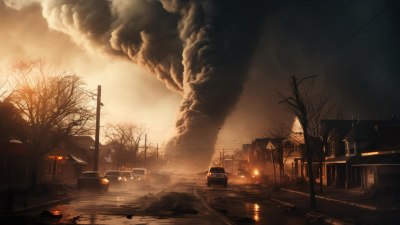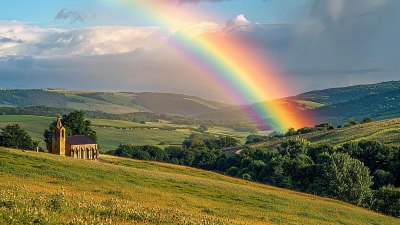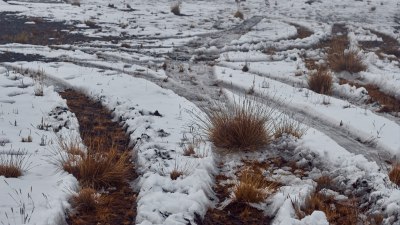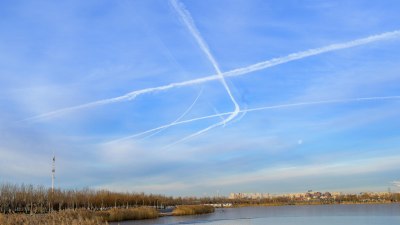What Makes Tornadoes Change Direction The Hidden Forces
Explore the hidden forces that dictate tornadoes' changing directions and how they shape their pathways.

Tornadoes are among the most terrifying and destructive natural phenomena on Earth. With wind speeds that can exceed 300 miles per hour, these violent storms can wreak havoc in mere moments. While meteorologists have made substantial progress in understanding tornadoes, one area that remains enigmatic is the shifting course these storms often take. What causes a tornado to change direction? This question is not just academic; understanding the forces at play could save lives and improve predictive models.
The Basics of Tornado Formation
Before diving into the factors that influence a tornado's direction, it is essential to understand how tornadoes form. Tornadoes usually develop from severe thunderstorms, specifically supercells, which are large, rotating storm systems. These supercells require a combination of warm, moist air at the surface and cooler, drier air aloft. The instability created by this temperature and moisture gradient, along with wind shear—the variation in wind speed and direction with height—provides the necessary conditions for tornado formation.
How Tornadoes Are Born
As a supercell develops, the wind shear causes the updraft to begin rotating, forming what is known as a mesocyclone. If conditions are favorable, a condensation funnel may descend from the base of the thunderstorm, eventually touching the ground and creating a tornado. As the tornado continues to form, it is influenced by various meteorological factors that can later affect its path.
The Role of Wind Shear
Wind shear is crucial in the initial formation of a tornado but continues to play a significant role as the tornado progresses. Vertical wind shear can change the structure of thunderstorms, altering their intensity and ultimately their tornado-producing capability. In many instances, a tornado may change direction as it responds to shifts in wind direction and speed in its surrounding environment.
Terrain Influences
The geographical landscape plays a vital role in determining a tornado's path. Tornadoes typically move along a path of least resistance, which can be influenced by hills, valleys, forests, and urban areas. For example, when a tornado encounters a mountain, it may be forced to change direction or even dissipate if the surface conditions are unsuitable for maintaining its strength. Alternatively, urban structures can redirect wind flow, causing a tornado to alter its path to adapt to the new environmental flow.
The Effects of Temperature
Temperature differentials can also lead to changes in a tornado's trajectory. As the heat from the ground interacts with cooler air aloft, a tornado may be nudged in a different direction. Warm air rising in the vicinity can create localized low-pressure areas, which may redirect the tornado's movement. These thermal variations can sometimes lead to erratic behavior, including rapid shifts in direction.
Influence of Other Storms
Interestingly, other weather systems nearby can also affect a tornado's direction. When a tornado forms in proximity to other thunderstorms or severe weather, it can be influenced by those systems. The outflow boundaries from one storm can affect the inflow of another, potentially drawing the tornado toward it. These complex interactions between storms mean that a tornado may not only change direction but may also switch its provenance as it interacts with neighboring systems.
Boundary Layer Interactions
The boundary layer—the lowest part of the atmosphere, where we live—can significantly influence a tornado's movement. Variations in surface roughness, such as transitions from urban areas to fields, can affect wind patterns and turbulence, contributing to changes in a tornado's path. These interactions can cause the tornado to veer off course in unpredictable ways.
Aerial Currents and Jet Streams
Aerial currents, including the jet stream, can also play a pivotal role. The location and strength of these winds can shift the overlying flow, altering the environment a tornado interacts with. Tornadoes that form below strong upper-level winds may be more susceptible to directional shifts if those winds guide the storm’s development. The complexity lie in the multi-layer interactions that occur as the tornado passes through varying wind regimes.
Human Impacts on Tornado Paths
Though it may not be a direct factor, human activities may contribute to tornado direction changes over time. Urbanization alters the landscape and can potentially impact local wind patterns. Additionally, climatic changes resulting from human activities may have broader impacts on tornado dynamics, including frequency, intensity, and pathways.
The Challenge of Prediction
The complexities of tornadoes, particularly regarding changes in direction, present a significant challenge for meteorologists. While advancements in technology have led to more accurate forecasting tools and models, the fluid nature of tornado dynamics means that predicting a tornado's path remains largely probabilistic. As scientists continue to study tornado behavior, incorporating data from various elements such as wind shear, storm interactions, and geographical influences is essential for improving forecasting abilities.
The Future of Tornado Research
In the coming years, advancements in computational power and simulation technology may allow scientists to conduct more complex and detailed studies of tornado dynamics. Research programs that focus on the interactions between tornadoes and their surroundings can provide insights that enhance community preparedness and response plans. Investigating the subtleties of how tornadic storms react to various atmospheric and surface conditions will continue to be a key area of focus.
Tornadoes are dynamic and unpredictable entities influenced by multifaceted interactions between meteorological, geographical, and even human factors. Understanding what makes tornadoes change direction can lead to better preparedness and ultimately save lives. While we have made strides in our comprehension, much remains to be explored. The more we understand these hidden forces, the better equipped we will be to mitigate hazards posed by these ferocious storms.











